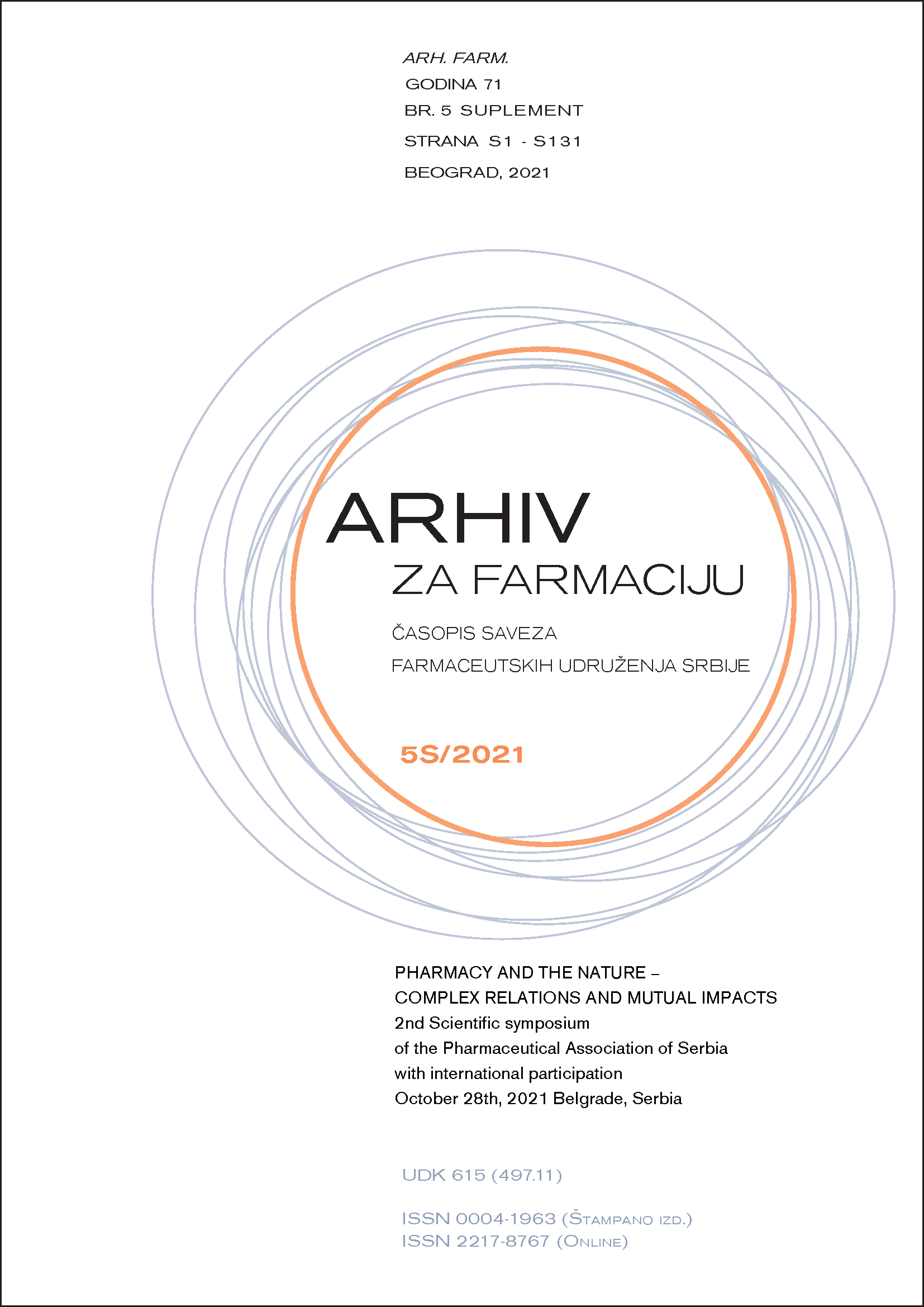POLYPHENOLIC COMPOSITION OF COMMERCIAL SAMPLES OF RTANJ TEA
Abstract
Rtanj’s tea infusion is often used to relieve respiratory, urinary and other ailments, as well as a tonic or a beverage. Commercially available rtanj tea represents a herb obtained mainly from wild plants. As a biological source manufacturers list several species of the genus Satureja L., i.e. Satureja kitaibelii Wierzb. ex Heuff., S. montana L. and S. hortensis L. This diversity may affect the composition of infusions, their effects and organoleptic features.
In this work, we investigated the polyphenolic profile of infusions (2 g/100 mL) prepared from seven commercially available samples of Rtanj tea. The LC-MS method was used to identify polyphenols as well as to determine the content of marker compounds, rosmarinic acid (RA) and clinopodic acid O (CAO), by using linear regression of rosmarinic acid as an external standard. The content of total polyphenols was determined by the spectrophotometric method based on the Folin-Ciocalteu reaction, and the results were expressed in gallic acid (GA) equivalents/L of infusion.
LC-MS analysis revealed that the qualitative composition of the tested infusions was very similar. Based on the UV and MS data, phenolic acids were identified in the infusions, of which RA and/or CAO were the dominant compounds, as well as flavonoids, among which luteolin heteroside prevailed. On the other hand, infusions differed in quantitative composition. The content of total polyphenols varied between 118.3 and 476.2 mg/L GA, the content of RA 19.5–129.5 mg L, while the content of CAO in infusions was 13.9–72.3 mg/L, calculated as RA. Higher content of total polyphenols and RA was determined in the infusions of the samples in the form of filter bags than those found in the form of non-comminuted herb. In addition, it was observed that the origin of plant material had an impact on the quantity ratio between RA and CAO.
The results obtained in this study indicate the importance of the selection of the biological source and its correct identification, as well as the primary processing of the herb on the composition of the infusions.

